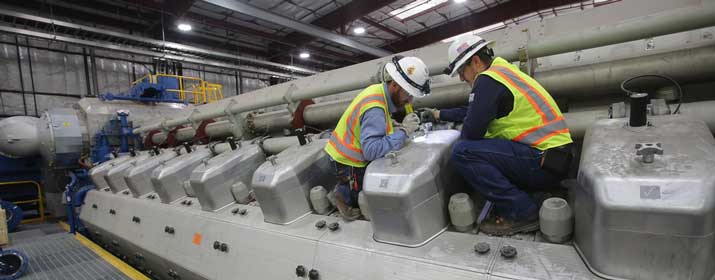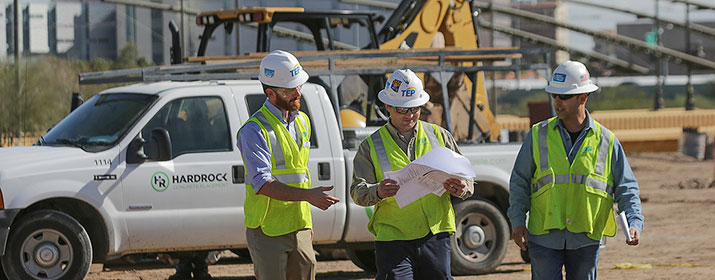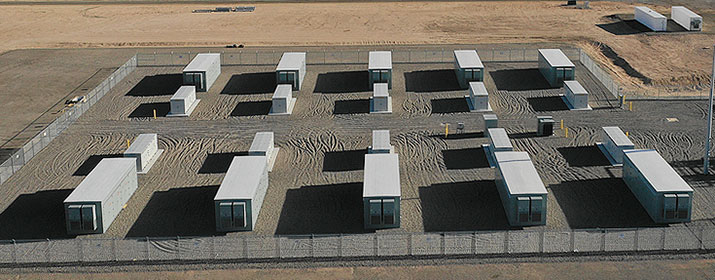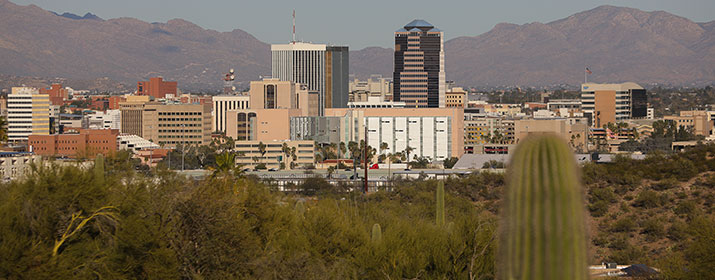
Efficient, hydrogen-ready natural gas plants are expected to be a key part of keeping our long-term commitment to provide reliable, affordable and increasingly sustainable service.
As we expand our wind, solar and energy storage resources, we anticipate needing new natural gas-fired units to ensure 24/7 service, particularly during hot summer weather. This need was identified in TEP’s 2023 Integrated Resource Plan and continues to evolve in response to proposed data centers and other potential projects with high, around-the-clock energy demands.
Developing new natural gas generators and renewable resources to support our planned coal plant retirements would increase the capacity of our energy portfolio while reducing its carbon intensity, helping us make progress toward our long-term goal of net zero greenhouse gas emissions by 2050.
Natural gas-fired power plants are:
Reliable: TEP must meet 24/7 energy demands in cost-effective ways while adapting to a changing climate and mitigating environmental impacts. New natural gas units would help us maintain reliability as we retire our remaining coal plants by 2032. While that’s still several years away, we’ve already begun making preliminary plans for new gas plants because it would take a long time to build them, and we need them online before our coal plants retire.
Sustainable: Natural gas units emit about half as much carbon dioxide (CO2) as coal units. They also can be designed to burn hydrogen, allowing them to generate energy without CO2 emissions when access to hydrogen as a fuel matures. In 2022, TEP joined the state’s three public universities and other energy providers in a coalition working to create Arizona’s first federally funded hydrogen hub to help reduce CO2 emissions across economic sectors.
Realistic: Until long-duration energy storage improvements and other technological advancements allow an electric grid to operate reliably on zero carbon resources, natural gas plants will serve as a “bridge” to support our clean energy transition. TEP is bringing new wind turbines and solar arrays online at an unprecedented pace, but we need power sources at the ready when those resources aren’t producing.
Energy storage systems can help, but we can’t rely on them exclusively until they can reliably and affordably operate for longer than four hours at a scale that satisfies our current and projected around-the-clock energy demands. Increasing capacity constraints in the desert Southwest will continue to limit TEP’s access to energy from other sellers during periods of extreme weather and soaring energy demand.
Flexible: In addition to supporting a cleaner energy future, natural gas generators and energy storage systems provide more operational flexibility than our coal-fired power plants. Coal plants were designed to run year-round at high-capacity factors, but this is becoming less practical as low-cost but intermittent renewable energy is increasingly available.
While seasonal operations of our plants makes sense in the near term, running coal plants at significantly reduced capacity factors over an extended period is not cost effective. We need resources than can provide affordable, long-term, year-round flexibility. New natural gas-fired units would be more responsive than the coal-fired units they’d replace, helping us support expanded use of variable wind and solar power resources.
Affordable: Based on the latest market projections, hydrogen-ready natural gas units are the most affordable and reliable energy resource available. Solar plus storage systems are clean and cost-effective, but they cannot match the 24/7 availability of natural gas – not even when paired with wind turbines that typically produce during evening hours. While legacy coal units remain affordable for now, they won’t be for much longer due to tightening environmental controls and other factors.
To make sure we’re developing the most reliable and affordable energy resources, TEP conducts all-source requests for proposals to address emerging energy needs. Although we anticipate that new gas resources will be the only affordable way to provide the reliability our customers need, we’ll invite developers to propose other options with competing technologies, allowing us to evaluate their cost, performance, and other attributes.
Because power plants take many years to build, TEP soon will begin taking preliminary steps to secure necessary permits for new natural gas-fired generating units in the Tucson area. These steps will support timely development if such a plant is selected through an all-source request for proposals as the most cost-effective way to provide reliable energy for our customers.
Our siting process for new power plants includes extensive public outreach, including an evaluation of the potential impact of expanded generation on surrounding areas. We’ll also consider how a new, hydrogen-ready natural gas-fired generating resource would support our long-term carbon reduction goals.
Achieving our 2050 net zero goal will require an all-of-the-above approach, including investments in clean energy solutions and partnerships with customers to encourage thoughtful energy use, such as shifting power demand to take better advantage of our cleanest energy from the sun and wind.
Our success also will depend on advancements in clean energy technologies like long-duration storage, carbon capture and sequestration, hydrogen generation and small modular nuclear reactors. While we cannot predict exactly how we’ll achieve net zero carbon emissions, we expect that efficient, reliable natural gas generation will be a part of our path toward that goal.






